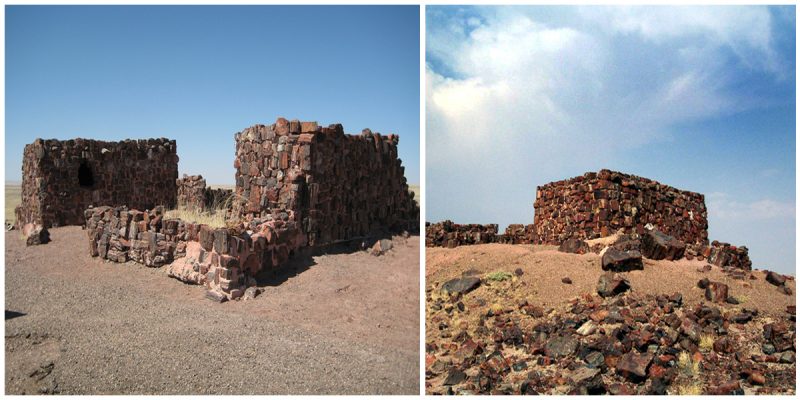Agate House is a partially reconstructed Puebloan building in Petrified Forest National Park (Navajo and Apache counties in northeastern Arizona), built almost entirely of petrified wood. Unlike other types of fossils which are typically impressions or compressions, petrified wood is a three-dimensional representation of the original plant made of hard rock.

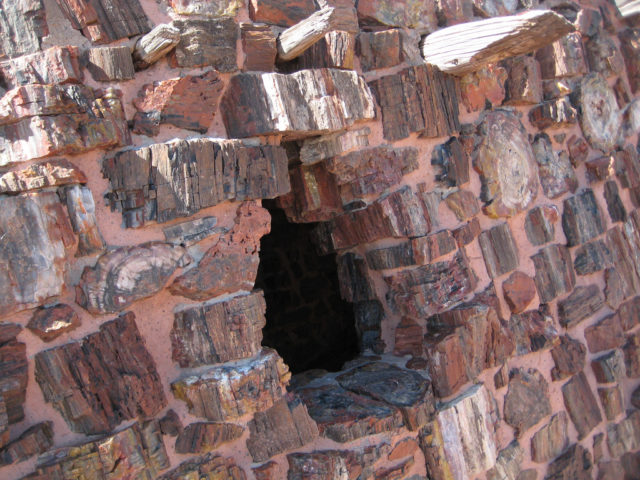
Archaeologists believe the pueblo was built by the ancestors of the modern Pueblo people (Pueblo II and Pueblo III periods) between 1050 and 1300 A.D. The size of the structure and time necessary to build and maintain it indicates that this was likely a year-round residence for a single family, rather than the temporary residences or field houses common at that time. Another theory suggests that this structure served for ceremonial purposes.
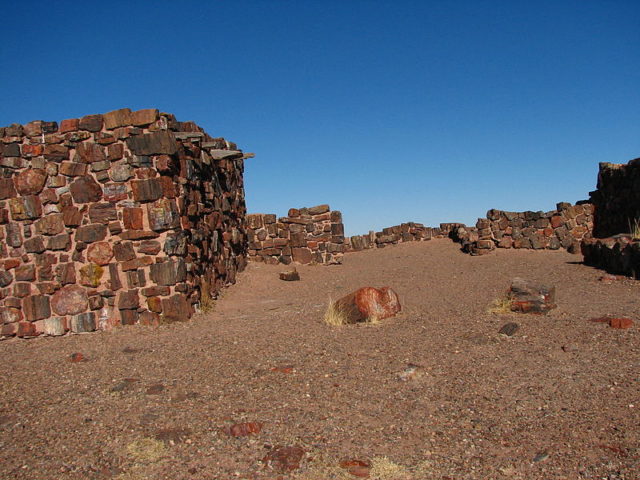
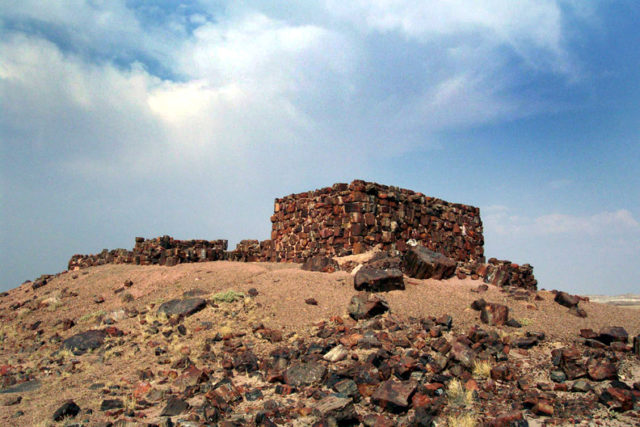
The house was originally constructed using medium to large pieces of petrified wood, which were presumably carried to the top of the knoll. The petrified wood was held in place by mud mortar and chinked with smaller pieces of petrified wood.
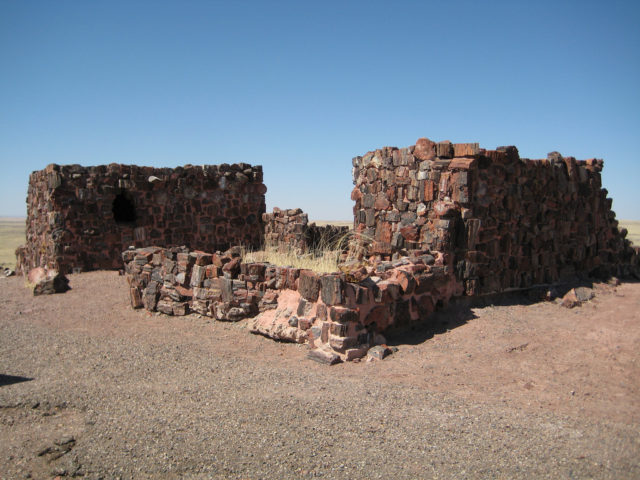
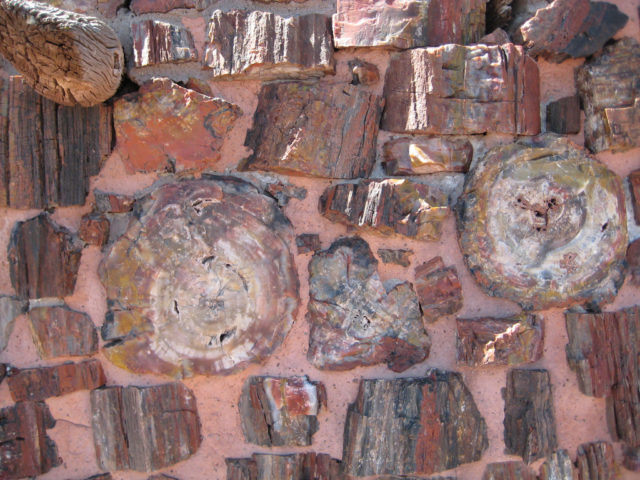
The ruins of Agate House were reconstructed by the Civilian Conservation Corps in 1933-34 under the watchful eye of C.B. Cosgrove Jr. of the New Mexico Laboratory of Anthropology. Room 7 was fully reconstructed with a new roof. Room 2’s walls were rebuilt to a height of five feet, but not roofed, and the remaining walls were rebuilt to a height of two or three feet. Though built using original materials, the 1930s reconstruction is not a completely accurate replication of the original structure. Still, it enables us to envision the daily lives of people that called it home. Since its excavation, hundreds of similar petrified log structure sites have been found in the park. Many dates to the same time period (Pueblo II-Pueblo III).
